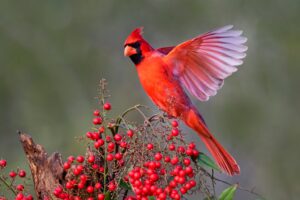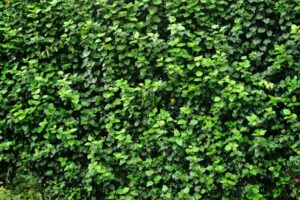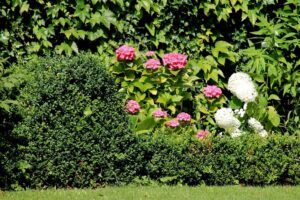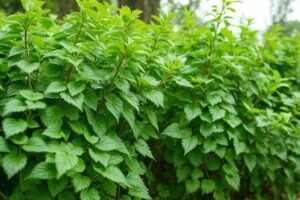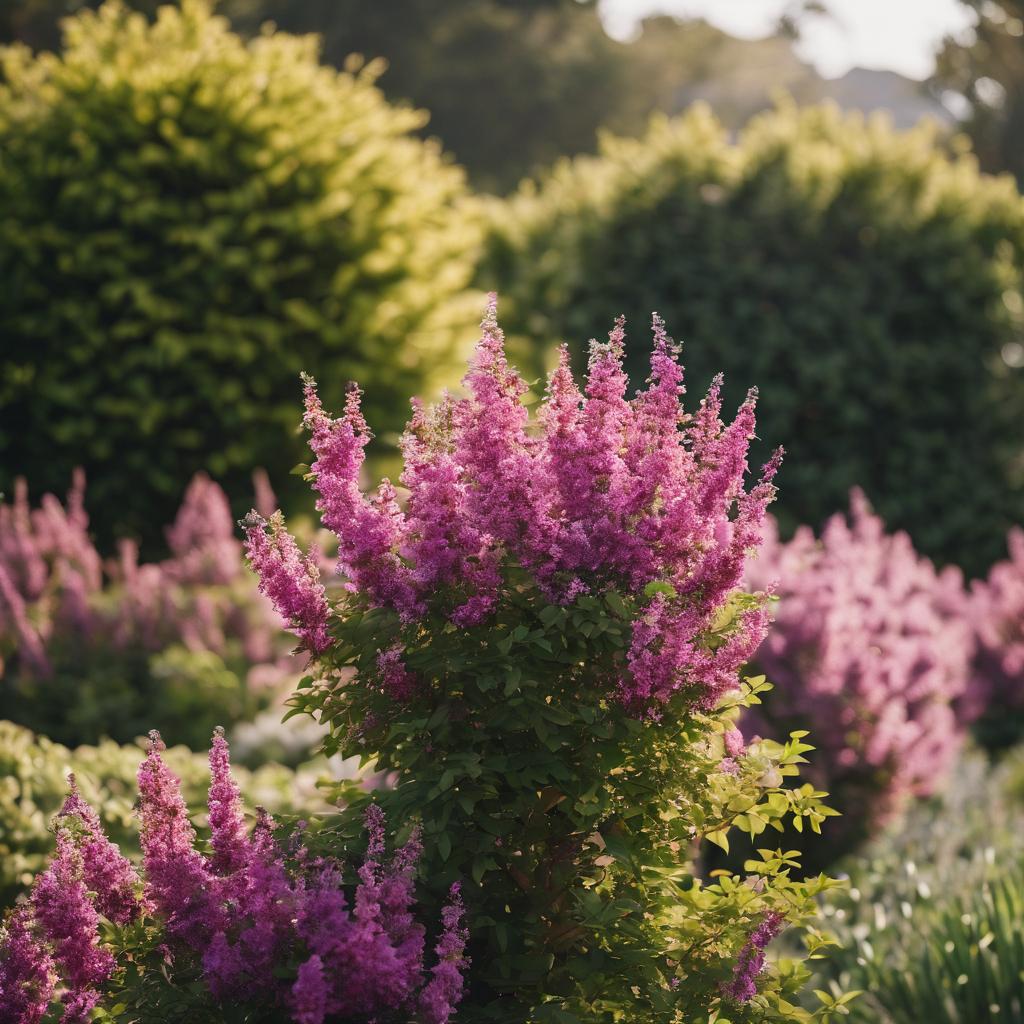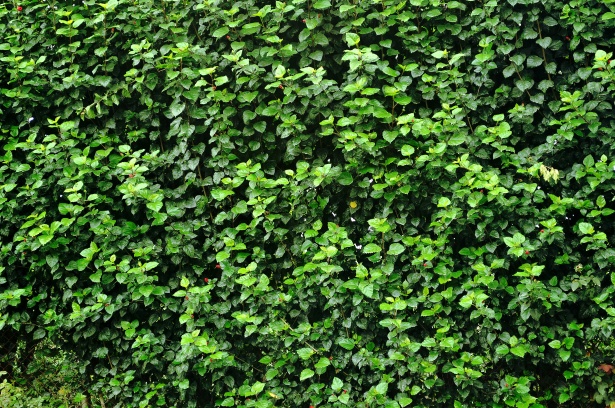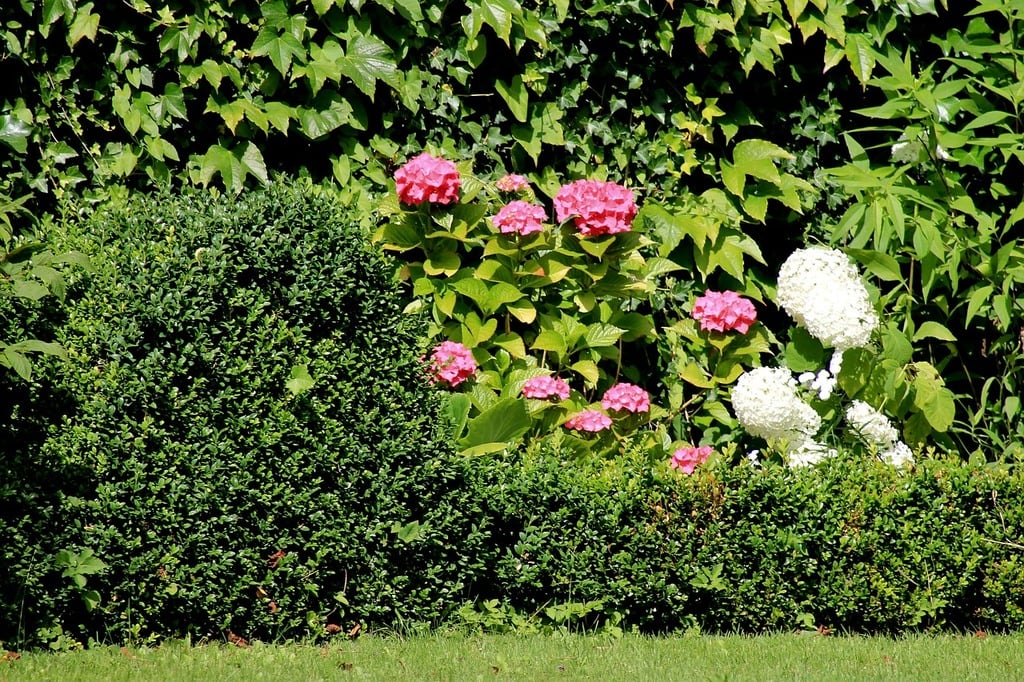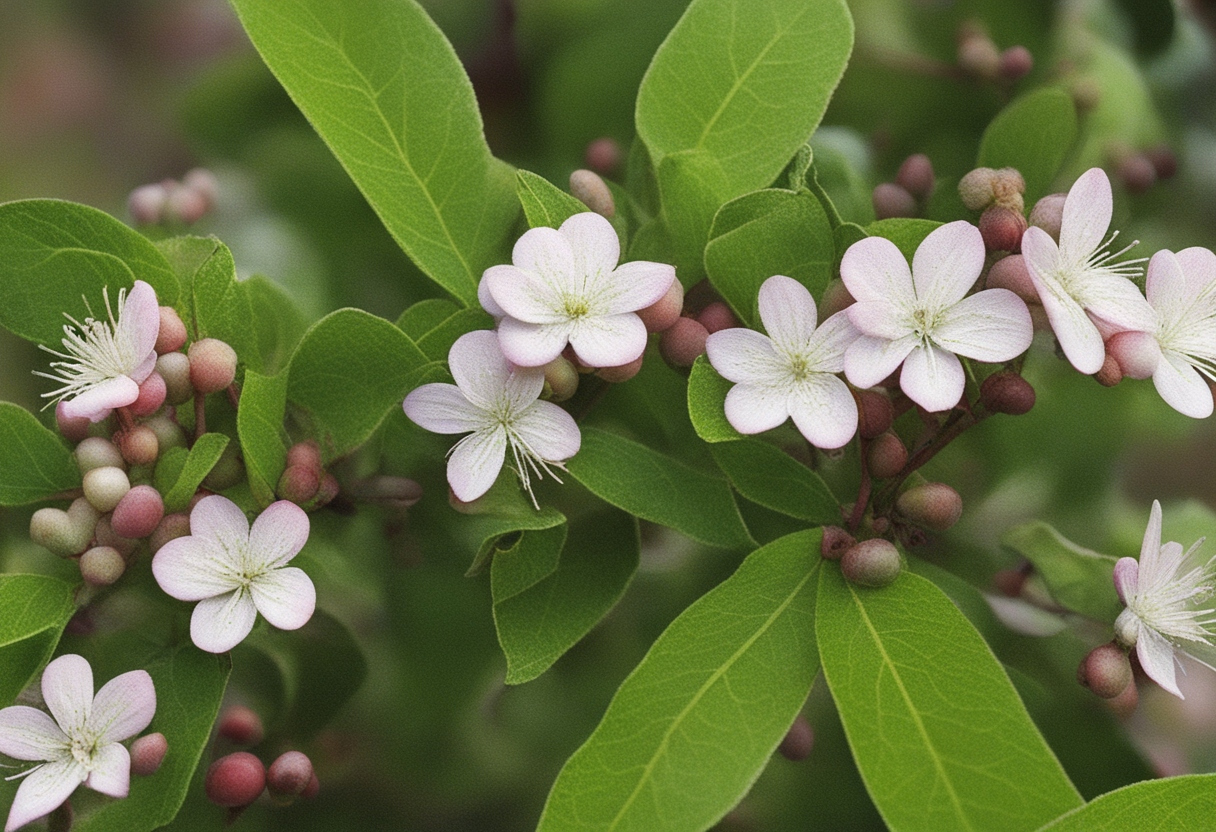Types of Shrubs for Privacy
When it comes to creating privacy in your outdoor space, shrubs can be a great addition. There are many types of shrubs that can provide a natural barrier and block unwanted views. One popular choice is the evergreen shrubs, such as the arborvitae or the leyland cypress. These shrubs retain their foliage year-round, ensuring privacy regardless of the season. Another option is the dense-branching shrubs like the holly or the boxwood, which can create a thick hedge that acts as a living wall. These shrubs can be pruned and shaped to fit your desired height and width, making them versatile for any size of the yard.
• Evergreen shrubs like arborvitae and leyland cypress retain foliage year-round for privacy
• Dense-branching shrubs such as holly and boxwood create a thick hedge for privacy
• Shrubs can be pruned and shaped to fit desired height and width
• Versatile for any size yard
Types of Shrubs for Shade
Shade-loving shrubs are an excellent choice for areas in the garden where sunlight is limited. These shrubs thrive in partially or fully shaded locations, adding beauty and texture to those darker spots. One popular option is the hydrangea, which produces stunning blooms in various shades of pink, blue, and white. Another great choice is the rhododendron, with its vibrant clusters of flowers that can brighten up even the shadiest corners. These shrubs not only enhance the aesthetics of your garden but also provide much-needed relief to the plants and animals seeking shelter from the sun’s rays.
In addition to hydrangeas and rhododendrons, there are several other shade-loving shrubs to consider. The Japanese maple, known for its graceful foliage and vibrant fall colors, can thrive in dappled shade. The azalea, a low-maintenance shrub with beautiful spring blooms, also prefers shady conditions. Furthermore, the holly shrub, with its glossy evergreen leaves, adds a touch of elegance to shaded gardens. By selecting the right variety of shrubs for shade, you can create a cool and inviting oasis in your garden while adding visual interest to those darker areas.
• Hydrangea: Produces stunning blooms in shades of pink, blue, and white
• Rhododendron: Vibrant clusters of flowers that brighten up shady corners
• Japanese Maple: Graceful foliage and vibrant fall colors thrive in dappled shade
• Azalea: Low-maintenance shrub with beautiful spring blooms prefers shady conditions
• Holly Shrub: Glossy evergreen leaves add elegance to shaded gardens
Types of Shrubs for Erosion Control
Types of Shrubs for Erosion Control:
One of the key challenges in landscaping is dealing with erosion issues. Erosion can cause soil loss, destabilize slopes, and damage the surrounding environment. Luckily, there are several types of shrubs that can effectively control erosion and help stabilize the soil.
One popular choice for erosion control is the Willow Hybrid. This shrub has a strong root system that helps bind the soil together, preventing erosion. It also has dense foliage, which provides excellent coverage and helps reduce the impact of rainfall on the ground. Additionally, the Willow Hybrid is a fast-growing shrub, allowing for quick results in erosion control projects. Another effective option is the Juniper shrub. With its dense branches and low spreading habit, the Juniper helps retain soil on slopes and reduces water runoff. It also has a deep root system that anchors the soil and prevents erosion. Furthermore, the Juniper is a hardy shrub that requires minimal maintenance, making it a great choice for erosion control in various landscapes. By selecting the right shrubs for erosion control, you can not only address the problem but also enhance the overall aesthetic and environmental value of your outdoor spaces.
• Willow Hybrid:
– Strong root system binds soil together
– Dense foliage provides excellent coverage
– Fast-growing for quick results
• Juniper:
– Dense branches and low spreading habit retain soil on slopes
– Reduces water runoff
– Deep root system anchors soil and prevents erosion
By selecting the right shrubs for erosion control, you can not only address the problem but also enhance the overall aesthetic and environmental value of your outdoor spaces.
Types of Shrubs for Ornamental Purposes
Ornamental shrubs are a fantastic addition to any garden, bringing beauty and elegance to the landscape. These shrubs are primarily selected for their attractive appearance, whether it be their stunning blooms, vibrant foliage, or unique growth habits. One such shrub that is highly sought after for its ornamental value is the hydrangea. With its large, showy flowers that come in various shades of pink, blue, and white, the hydrangea adds a touch of romance to any outdoor space. Its lush foliage also provides a lovely backdrop for other plants in the garden.
Another popular choice for ornamental purposes is the rose bush. Known for its timeless beauty and exquisite fragrance, the rose is considered the queen of flowers. With its wide range of colors, from deep reds to soft pinks and pure whites, the rose can add a touch of elegance and sophistication to any garden. Not only do roses look stunning in the landscape, but they also make wonderful cut flowers, allowing you to bring their beauty indoors. Whether you choose hybrid teas, climbers, or shrub roses, adding a rose bush to your garden will undoubtedly elevate its ornamental appeal.
• Hydrangea:
– Large, showy flowers in shades of pink, blue, and white
– Adds a touch of romance to any outdoor space
– Lush foliage provides a lovely backdrop for other plants
• Rose bush:
– Timeless beauty and exquisite fragrance
– Wide range of colors from deep reds to soft pinks and pure whites
– Adds elegance and sophistication to any garden
– Makes wonderful cut flowers for indoor arrangements
In addition to hydrangeas and rose bushes, there are several other types of shrubs that can enhance the ornamental appeal of your garden. One such option is the lilac bush. Known for its fragrant blooms in shades of purple, pink, white, or even yellow, lilacs bring a delightful aroma to the air during their blooming season. These shrubs also have attractive heart-shaped leaves that provide visual interest even when they are not in bloom.
If you’re looking for a shrub with unique foliage coloration, consider adding a barberry bush to your landscape. Barberries come in various hues ranging from vibrant reds and oranges to golden yellows or rich purples. Their colorful leaves add vibrancy and contrast against greenery or other flowering plants nearby.
For those who prefer evergreen shrubs that provide year-round interest, boxwood is an excellent choice. With its dense foliage and ability to be shaped into formal hedges or topiaries, boxwood adds structure and elegance to any garden design. Its small leaves create a neat appearance while maintaining their green color throughout all seasons.
Lastly, if you want an ornamental shrub that attracts wildlife like butterflies or hummingbirds while adding beauty at the same time, consider planting butterfly bush (Buddleja davidii). This fast-growing shrub produces long spikes filled with tiny blossoms in various colors such as lavender-blue or bright orange-yellow. Not only will it provide a stunning display, but it will also invite pollinators to your garden.
In conclusion, ornamental shrubs offer a wide range of options for adding beauty and elegance to your garden. Whether you choose hydrangeas for their showy flowers or roses for their timeless appeal, incorporating these shrubs into your landscape design can transform any outdoor space. Additionally, lilacs, barberries, boxwood, and butterfly bushes are all excellent choices that bring unique characteristics and visual interest to the garden. By selecting the right combination of shrubs based on color, fragrance, foliage type, and wildlife attraction preferences, you can create a truly stunning ornamental garden that is sure to impress.
Types of Shrubs for Wildlife Habitat
Creating a wildlife-friendly habitat in your backyard can be both rewarding and beneficial to the environment. By incorporating certain types of shrubs into your landscaping, you can attract a diverse range of wildlife, from birds and butterflies to small mammals. One such shrub is the serviceberry (Amelanchier spp.), which produces clusters of white flowers in the spring, followed by small edible berries loved by birds. Its dense foliage also provides nesting sites and protection for various species.
Another excellent option for wildlife habitat is the spicebush (Lindera benzoin). This deciduous shrub features yellow-green flowers in early spring, attracting bees and other pollinators. As the name suggests, its leaves emit a pleasant aroma when crushed, making it a favorite among certain butterfly species. Wildlife enthusiasts often choose spicebush for its bright red berries, which provide valuable food for birds during fall and winter. Additionally, the dense foliage offers privacy and shelter for various animals seeking refuge in your garden.
Including these shrubs in your landscape not only adds beauty and interest but also contributes to the conservation of local wildlife. Consider incorporating a variety of shrub species to create a welcoming environment that supports biodiversity and enhances the natural balance of your surroundings.
• Serviceberry (Amelanchier spp.):
– Produces clusters of white flowers in spring
– Small edible berries loved by birds
– Dense foliage provides nesting sites and protection for various species
• Spicebush (Lindera benzoin):
– Yellow-green flowers attract bees and other pollinators
– Leaves emit a pleasant aroma when crushed, attracting certain butterfly species
– Bright red berries provide valuable food for birds during fall and winter
– Dense foliage offers privacy and shelter for various animals seeking refuge
Types of Shrubs for Fragrance
With their captivating aromas, shrubs for fragrance can add an extra sensory experience to any garden. There are numerous options available when it comes to selecting these delightful additions. One popular choice is the Gardenia, renowned for its intoxicating scent and beautiful white blooms. Their fragrance can fill the air during the evenings, making them perfect for creating a romantic atmosphere. Another fragrant shrub option is the Rose, available in a wide variety of colors and sizes. Known for their classic scent, roses can add elegance and allure to any outdoor space.
• Gardenia: Renowned for its intoxicating scent and beautiful white blooms
• Rose: Available in a wide variety of colors and sizes, known for their classic scent
Types of Shrubs for Edible Landscaping
There are numerous shrubs that can be incorporated into your landscape to not only add beauty but also provide you with edible treats. One popular option for edible landscaping is blueberry shrubs. These shrubs are known for their attractive flowers in spring, delicious berries in summer, and vibrant foliage in autumn. Blueberries can be enjoyed fresh off the bush, used in recipes for jams, pies, and desserts, or even dried for snacking throughout the year.
Another shrub that can enhance your edible landscape is the raspberry shrub. With their delicate white flowers and juicy red berries, raspberries add both visual appeal and delicious flavor to your garden. These shrubs can be trained to grow on trellises or fences, making them a space-saving option for small gardens. A handful of fresh raspberries can be the perfect addition to your morning cereal, yogurts, or smoothies. They can also be used in baking or turned into mouth-watering preserves.
• Blueberry shrubs are a popular option for edible landscaping.
• They have attractive flowers in spring, delicious berries in summer, and vibrant foliage in autumn.
• Blueberries can be enjoyed fresh off the bush or used in various recipes such as jams, pies, and desserts.
• They can also be dried for snacking throughout the year.
• Raspberry shrubs are another great choice for edible landscaping.
• They have delicate white flowers and juicy red berries that add visual appeal to your garden.
• These shrubs can be trained to grow on trellises or fences, making them suitable for small gardens.
• Fresh raspberries can be added to breakfast cereals, yogurts, smoothies, or used in baking and preserves.
Types of Shrubs for Low Maintenance Gardens
When it comes to creating a low maintenance garden, choosing the right shrubs can make all the difference. These types of shrubs require minimal care and attention while still providing a beautiful and flourishing landscape. One such shrub is the Dwarf Korean Lilac (Syringa meyeri palibin). This compact shrub reaches a maximum height of only 4 feet and features clusters of fragrant purple or pink flowers in the spring. Not only is it low maintenance, but it also adds a delightful fragrance to your garden, attracting butterflies and hummingbirds.
Another great option for low maintenance gardens is the Blue Star Juniper (Juniperus squamata ‘Blue Star’). This shrub is perfect for adding a pop of color and texture to your landscape without much effort. With its silvery blue needles and dense, mounded shape, it offers year-round interest. The Blue Star Juniper is drought-tolerant and resistant to pests and diseases, making it an ideal choice for those who want a hassle-free garden. Whether used as a border, ground cover, or a focal point, this shrub will thrive with minimal care, allowing you to enjoy a vibrant garden without spending hours on upkeep.
• Dwarf Korean Lilac (Syringa meyeri palibin)
– Maximum height of 4 feet
– Clusters of fragrant purple or pink flowers in spring
– Low maintenance and adds fragrance to garden
– Attracts butterflies and hummingbirds
• Blue Star Juniper (Juniperus squamata ‘Blue Star’)
– Adds color and texture to landscape
– Silvery blue needles and dense, mounded shape
– Offers year-round interest
– Drought-tolerant and resistant to pests and diseases
– Ideal for hassle-free gardening
– Can be used as a border, ground cover, or focal point
Types of Shrubs for Windbreaks
The use of shrubs for windbreaks is a common practice in landscaping. These types of shrubs serve as a barrier against the strong winds, helping to protect other plants, structures, or even animals in the surrounding area. They are often planted in rows or groups to create a dense and sturdy barrier.
One popular shrub for windbreaks is the Eastern Red Cedar (Juniperus virginiana). Known for its dense foliage and durability, this shrub is capable of withstanding strong winds and providing effective protection. Another suitable option is the Colorado Blue Spruce (Picea pungens), which has dense, silver-blue needles that add aesthetic appeal to the landscape while serving as a dependable windbreak. Other common choices include the Common Juniper (Juniperus communis) and the Douglas Fir (Pseudotsuga menziesii), both of which possess characteristics that make them effective in windbreak applications.
These shrubs not only help to reduce the force of wind, but they can also create a microclimate that is more favorable for other plantings. By acting as a wind barrier, they can decrease soil erosion, minimize the drying effect of wind on nearby plants, and even provide shelter for wildlife. Choosing the appropriate shrub for windbreaks depends on factors such as the desired height and thickness of the barrier, the specific climatic conditions in the area, and the overall aesthetics of the landscape. Proper planning and selection of shrubs can result in an effective windbreak that serves multiple purposes in the garden or outdoor space.
• Eastern Red Cedar (Juniperus virginiana)
– Known for dense foliage and durability
– Withstands strong winds effectively
• Colorado Blue Spruce (Picea pungens)
– Dense, silver-blue needles add aesthetic appeal
– Reliable windbreak option
• Common Juniper (Juniperus communis)
– Possesses characteristics suitable for windbreaks
• Douglas Fir (Pseudotsuga menziesii)
– Effective in windbreak applications
These shrubs not only reduce the force of wind but also:
• Create a more favorable microclimate for other plants
• Decrease soil erosion
• Minimize the drying effect of wind on nearby plants
• Provide shelter for wildlife.
Factors to consider when choosing shrubs for windbreaks:
1) Desired height and thickness of the barrier.
2) Specific climatic conditions in the area.
3) Overall aesthetics of the landscape.
Proper planning and selection will result in an effective multi-purpose windbreak in your garden or outdoor space.
Types of Shrubs for Container Gardening
When it comes to container gardening, shrubs can add height, structure, and a touch of beauty to your outdoor space. Not all shrubs are suitable for container gardening, as their growth habits and root systems need to be taken into consideration. However, there are several types of shrubs that thrive in containers, making them an excellent choice for those with limited space or for adding interest to patios, balconies, or small gardens.
One popular option for container gardening is the dwarf evergreen shrubs. These compact shrubs provide year-round interest with their evergreen foliage. They come in a variety of sizes and shapes, making it easy to find one that suits your container and design preferences. Some popular dwarf evergreen shrubs for containers include the boxwood, holly, and euonymus. These shrubs can be pruned to maintain their shape and size, and their dense foliage adds privacy and texture to any container garden.
Another type of shrub that thrives in containers is the flowering shrub. These shrubs not only provide beautiful blooms but also attract pollinators like butterflies and hummingbirds. Some popular flowering shrubs suitable for container gardening include hydrangeas, roses, and azaleas. These shrubs not only add a burst of color to your containers but also create a focal point in your garden. Just ensure that you select varieties that are specifically bred for container gardening, as they have smaller root systems and can adapt well to limited soil space.
In conclusion, container gardening opens up a world of possibilities when it comes to incorporating shrubs into your outdoor space. Whether you opt for dwarf evergreen shrubs for structure and privacy or flowering shrubs for a splash of color, there are plenty of options to choose from. By selecting shrubs that are well-suited for container gardening and providing them with proper care, you can enjoy the beauty and benefits of shrubs in even the smallest of spaces.
• Dwarf evergreen shrubs are a popular choice for container gardening, providing year-round interest with their compact size and dense foliage.
• Boxwood, holly, and euonymus are examples of dwarf evergreen shrubs that can be pruned to maintain their shape and size in containers.
• Flowering shrubs not only add beauty to your containers but also attract pollinators like butterflies and hummingbirds.
• Hydrangeas, roses, and azaleas are popular flowering shrubs suitable for container gardening.
• When selecting flowering shrubs for containers, choose varieties specifically bred for this purpose with smaller root systems.
• Container gardening allows you to incorporate shrubs into small spaces such as patios or balconies.




